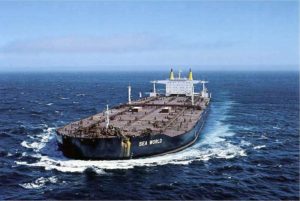
Photo of tanker “Sea World”: www.aukevisser.nl
With elections coming up in the fall, we are hearing a lot of talk about the U.S. economy. Here are four things voters should know about economics.
- Nobody fully understands or controls the U.S. economy. It is as complicated as the earth’s climate, with millions of actors and millions of inputs. There is no control panel and there are no obvious pressure points.
- Presidents do not have reliable tools for managing the U.S. economy. If presidents could manage the economy effectively, we wouldn’t have recessions. There are a handful of tools (tax cuts, stimulus packages, monetary policy, wage and price controls, etc.) that over time have been suspected of having a measurable impact, but the American economy responds to inputs from Congress, other nations, businesses, nature, and consumers. The link between economic policy and jobs is especially tenuous.
- The economy is cyclical, and will go up and down over time even if no policies are ever changed in any way.
- Both political parties have the same basic economic policy. Changes in economic policy from administration to administration are generally modest and any impact of those changes will not be measurable for years.
- Supply-side economics really is Voodoo economics. Tax cuts for the highest earners and for businesses do not cause wealth to “trickle down” to the majority of taxpayers, nor do they increase government revenue through greater economic growth. Instead, unless they are paired with spending cuts, they boost the deficit and any impact they have on economic growth is marginal and temporary. The best way to stimulate the economy is to give the largest tax breaks (or, better yet, cash payments) to the lowest earning citizens. They will not use the extra money to buy back shares, pay dividends to shareholders, or give bonuses to highly-paid executives. They will spend it on necessities, thus stimulating the economy. Ultimately, the best way to grow the economy is to expand the middle class.
Think of the economy as an enormous supertanker, making its way ponderously across the sea. The Master sets the course and speed, but the actual movement of the ship is determined by the combination of engine speed, rudder placement, ship’s displacement, wind, waves, currents, bottom geography, storms, and other factors that neither the Master nor the crew fully understand, let alone control. Stop the engines and the tanker might stop five miles from here. Turn the rudder and you might see the course change in two miles.
June 11, 2018